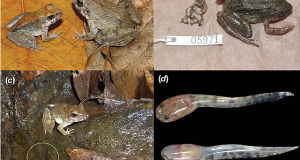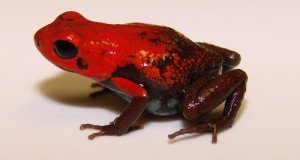Snakes are well known for their abilities to survive long fasts – up to 2 years in some cases – without ill effect. Working with ball pythons, diamondback rattlesnakes and various rat snakes, researchers at the University of Arkansas have recently shown that fasting snakes slow their metabolisms by up to 80%, and yet continue to grow even when food is withheld for 6 months.
Ball Pythons, the Champion Fasters
The reduced rate of metabolism may explain why many snakes lose little weight when fasting. Keyed by circadian rhythms (“internal clocks”), ball pythons are notoriously worrisome to pet keepers in this regard. Most refuse food for long periods of time each year, yet remain in good condition…in fact, the longest-lived captive snake is believed to be a ball python that attained approximately 51 years of age at the Philadelphia Zoo.
Growing Without Eating
The fact that fasting snakes continue to grow suggests that large size confers important survival advantages. If it did not, precious fat reserves would not be allocated to growth during food emergencies.
Evidence from Zoo Animals – the Gharial
Other reptiles and amphibians seem possessed of similar abilities, although confirmation is lacking. Fish-eating crocodilians known as Indian gharials (Gavialis gangeticus) are one example. A group of 8 at the Bronx Zoo ceased feeding in tune with the cool season in their native Pakistan each year for the nearly 20 years that they were under my care. They fasted for 3 months, but continued to move about and bask, and lost little of their 400-600 pound bulk during that time.
Other Reptile Pets
Bearded dragons and temperate zone reptiles, such as box and Eastern painted turtles, often stop feeding during the winter, even if kept warm. Bearded dragons usually become largely inactive, but turtles often move about normally. Despite this apparent use of energy, they lose little if any weight.
Interestingly, at least for turtles, individuals born in captivity usually remain active during the winter if kept warm, while wild-caught specimens typically go off feed for 2-6 months.
Know Your Pets’ Needs
Providing your pet with proper care and a healthful diet is vital if it is to survive seasonal fasts. Be sure to research the species that you keep carefully. Please consult our reptile and amphibian care books, and don’t hesitate to write in with any questions you may have.
Further Reading
To learn more about hibernation and fasting periods, please see my article Hibernation in Bearded Dragons and other Reptiles and Amphibians.
 That Reptile Blog – Reptile, Amphibian and Exotic Pet Care and Information
That Reptile Blog – Reptile, Amphibian and Exotic Pet Care and Information



Nice blog, always nice to start the day learning something. Also quite jealous you worked with Gharials, I fear the worse for those guys
Hello Gary, Frank Indiviglio here.
Thanks for your interest in our blog and the kind comment.
I apologize for being so long in responding. The delay was caused by a technical difficulty which has now been resolved.
Yes, that was the experience of a lifetime, no doubt. Apparently the main wild gharial population is still afflicted by a mysterious disease; a much smaller group remains in good shape but, as you say, there’s cause for concern.
A few years back I had the good fortune of meeting the man who has done more for the species than anyone, famed herpetologist Rhom Whittaker. Originally from NY but residing in India (where he founded the Madras Crocodile Bank) for most of his life, he was here for a conference. He wanted to check out his old stomping grounds so I took him snake hunting. Only an hour outside of NYC, we caught 6 species of snake and 6 of salamander in a single afternoon…definitely had everything to do with his abilities, as I have never had a day like that at that site…or anywhere in NY! He is a real gentleman, truly amazing considering his position in the field, and wrote it off to “good luck”.
Best regards, Frank Indiviglio.